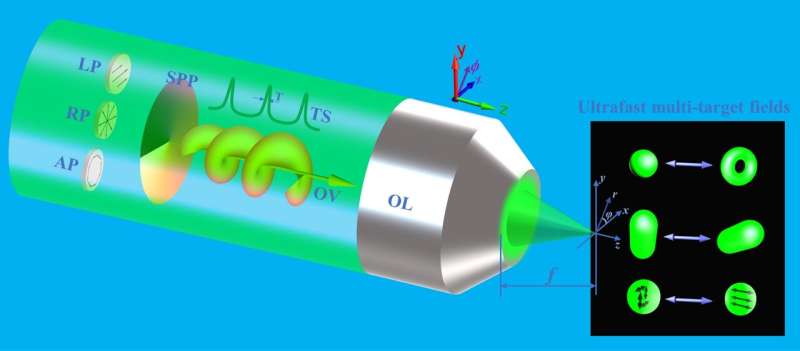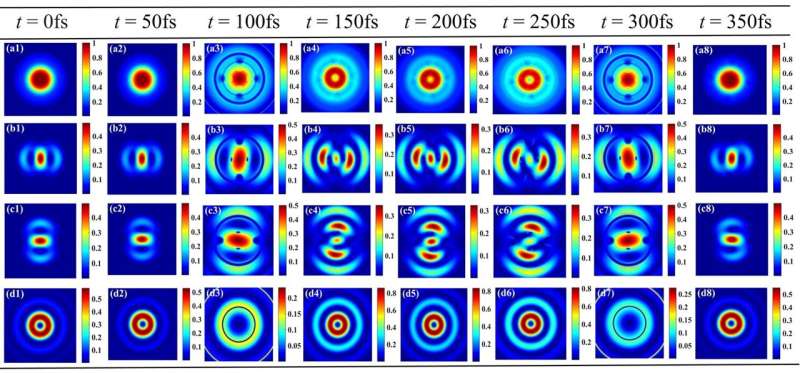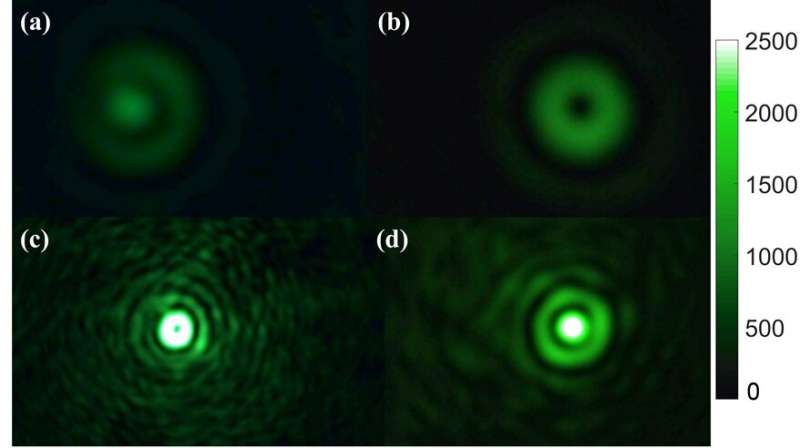
A new publication from Opto-Electronic Advances overviews ultrafast multi-target control of tightly focused light fields.
Space-time shaping of ultrafast pulse lasers is considered a powerful tool for the development of high-efficiency laser trapping, ultrafast optical spanner, precise time-resolution measurement, ultrafast spectroscopy, integrated optical chip and high-resolution imaging. In this regard, numerous research efforts have been devoted to achieving the specific spatial modulation and temporal encoding of light fields. These works, however, focus primarily on the single-functional space-time shaping of light fields and overlook the variation details of light fields within an ultrashort time regime. Thus, how to realize the ultrafast multi-target control of light fields by combining the vector-vortex (spatial) traits with the ultrafast time (temporal) variations has remained elusive until now. It has hindered not only instructive insights into the ultrafast light-matter interactions but also the applications in the novel optical tweezer settings.
Researchers led by Professor Baohua Jia at Swinburne University of Technology, Australia, and Dr. Zhongquan Nie at Taiyuan University of Technology, presented a new concept for realizing ultrafast modulation of multi-target focal fields based on the facile combination of the time-dependent vectorial diffraction theory with the fast Fourier transform. It is achieved by tightly focusing radially polarized femtosecond pulse vortex laser beams in a single objective lens geometry, as shown in Fig. 1. It was discovered that the ultrafast temporal degree of freedom within a configurable temporal duration (~400 fs) plays a pivotal role in determining the rich and exotic features of the focused light field at one time, namely, bright-dark alternation, periodic rotation, and longitudinal/transverse polarization conversion. The underlying control mechanisms have been in turn unveiled by the creation of zero or π phase variation, time-dependent Gouy phase shift, and energy flux redistribution, as showcased in Fig. 2. Additionally, the initial experimental results demonstrated by this work are well in agreement with their proposed theoretical predictions and numerical analyses, as demonstrated in Fig. 3.

The advantages of this work lie in not only enabling high-efficiency operation and low-complexity design of optical setup, but also increasing the controllable temporal degree of freedom into the practical optical tweezer strategies compared with that of traditional approaches. More importantly, the routes presented are capable of simultaneously achieving multiple and controllable targets of light fields in a single geometry configuration. Besides being of academic interest in diverse ultrafast spectral regimes, these peculiar behaviors of the space-time evolutionary beams promise to underpin prolific ultrafast-related applications such as multifunctional integrated optical chip, high-efficiency laser trapping, microstructure rotation, super-resolution optical microscopy, precise optical measurement, and liveness tracking.

Explore further
Provided by Compuscript Ltd
Citation: Ultrafast multitarget control of tightly focused light fields (2022, April 4) retrieved 4 April 2022 from https://ift.tt/JdDkXFG
This document is subject to copyright. Apart from any fair dealing for the purpose of private study or research, no part may be reproduced without the written permission. The content is provided for information purposes only.
"control" - Google News
April 04, 2022 at 09:24PM
https://ift.tt/JdDkXFG
Ultrafast multitarget control of tightly focused light fields - Phys.org
"control" - Google News
https://ift.tt/GRt64Px
https://ift.tt/qkJ2z4A
Bagikan Berita Ini














0 Response to "Ultrafast multitarget control of tightly focused light fields - Phys.org"
Post a Comment